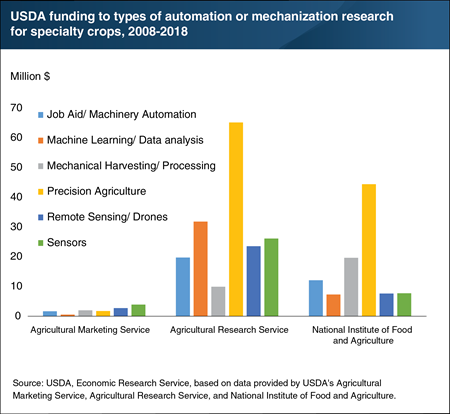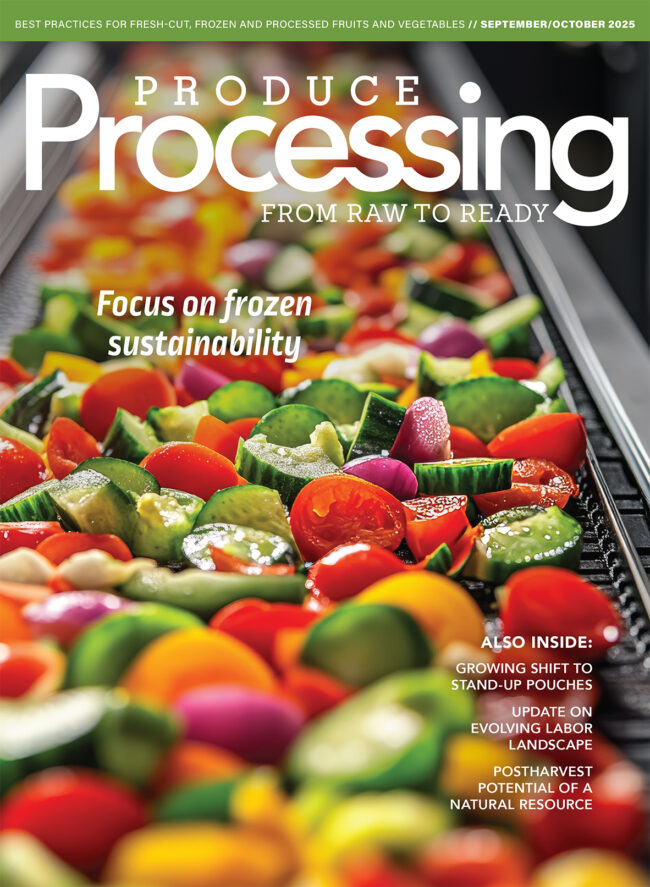USDA backs automation in specialty crop processing, farming
At $64.7 billion, specialty crops comprised one-third of U.S. crop receipts and one-sixth of receipts for all agricultural products in 2017.
Many specialty crops are labor-intensive in production, harvesting or processing. For example, harvest often requires workers to accurately distinguish ripe and unripe fruits and vegetables and gently pick, sort, or package the fruit or vegetable by hand without damage.
A long-term decline in the supply of farm labor in the U.S. has encouraged producers to select less labor-intensive crops, invest in labor-saving technologies, and develop strategies to increase labor productivity.
A number of USDA programs support the development and use of automation or mechanization in the production and processing of U.S. specialty crops.
From 2008-18 these programs in the Agricultural Marketing Service (AMS), the Agricultural Research Service (ARS), and the National Institute of Food and Agriculture (NIFA) funded $287.7 million toward 213 projects to develop and enhance the use of automation or mechanization in specialty crop production and processing.
Projects covered a broad spectrum of technologies, including:
- Job aid and machinery automation
- Machine learning and data analysis
- Mechanical harvesting and processing
- Precision agriculture
- Remote sensing and drones
- Sensors
Each of the USDA programs are designed differently to achieve unique objectives, although each program addresses the development and use of automation ormechanization in specialty crops in some form. The data in this chart are available in the February 2020 ERS report, Developing Automation and Mechanization for Specialty Crops: A Review of U.S. Department of Agriculture Programs.











